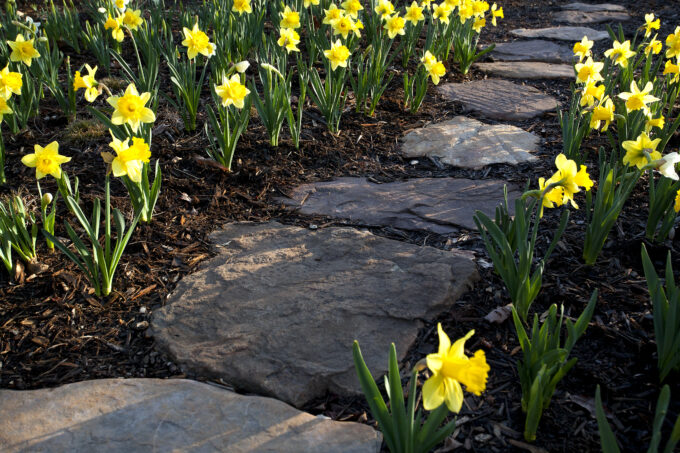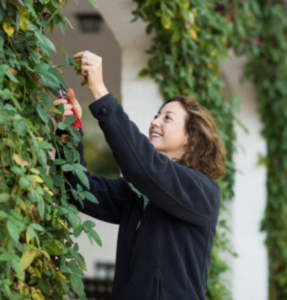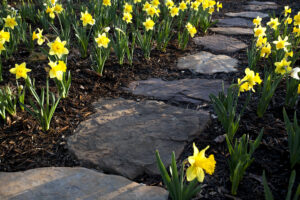In The Garden with Danielle Brown March 2025 Edition
In The Garden with Danielle Brown | March 2025 Edition
Chapter 3: Mulch Your Way to a Healthier Garden
This month is special. It is still winter, and, in some years, we have gotten some of our worst winter storms this month, but you get hints of spring. Bright highlights of forsythia stand out against the drab landscape, abundant, tiny flowers create a red glow around the maple trees, and daffodils raise their bright sunny faces. A warm, sunny day gives the illusion that spring is here only to be dashed by cold and clouds the next.
During this in-between time of dormant and growing, hints of what is to come-the first beginnings of an awakening landscape. It is probably time, if you haven’t already, to install mulch. My gardening tip for March is MULCH.
There are many choices of mulch out there and each has its merit, from double shredded to pine straw, to leaves and wood chips. There is debate out there about what is best to use, and everyone has a right to their own choice. What I will speak to is the why and how.
Why do we mulch? In a natural planting- the forest, the trees make their own mulch with fallen leaves, decaying plant material, etc. This creates less temperature and moisture fluctuations due to the insulating nature of the mulch. It can suppress weeds and prevent erosion. We are essentially mimicking what nature is already doing.
Besides providing all the benefits mentioned above, mulch is also attractive. When you put a nice edge and clean line of mulch around a bed or tree, it looks amazing. It also prevents string trimmers from getting too close to plants.
I once had someone say, “Mulch should look like it fell from Heaven.” If you have ever spent time mulching or appreciate seeing it done well, it is smooth and even, ending in a nicely edged boundary, not spilling over and not wavy against a wall. It also should not be too thick, especially around the crowns of perennials and the trunks of trees. Having this moisture-retentive layer on top of areas of the plant that need to stay relatively dry can promote rot. The roots need moisture, the top of the plant does not. Generally, we mulch a little thicker on new plantings, 2-3.” This helps reduce weed competition and gives a nice thick layer of protection to new plants just starting to root in. For maintenance purposes, 1-2” is perfect. After establishment, we don’t need that thick protective layer.
Whether you mulch your own landscape or have someone else do it for you, you should know that it is important, it does serve a purpose, and done correctly, can have many benefits.
About the Author: Danielle Brown – Project Manager at J. W. Townsend Landscapes
Danielle has 1/4 of a century of hands-on gardening experience and landscape design application under her belt. She is a VNLA Certified Horticulturist, ISA Certified Arborist, and is a Commercial Pesticide Applicator. She holds a B. S. in Psychology from JMU and a certificate in Landscape Design from University of Richmond. She is a VNLA Certified Horticulturist as well as a Registered Technician for pesticide application. Danielle joined J. W. Townsend, Inc. in April 2010 after working in sales and landscape design at a local garden center. She enjoys spending time with her two boys, cooking, gardening, and traveling.
Photo Credit: Featured image provided by Photographer Bill Mauzy https://www.mauzyphotography.com/


